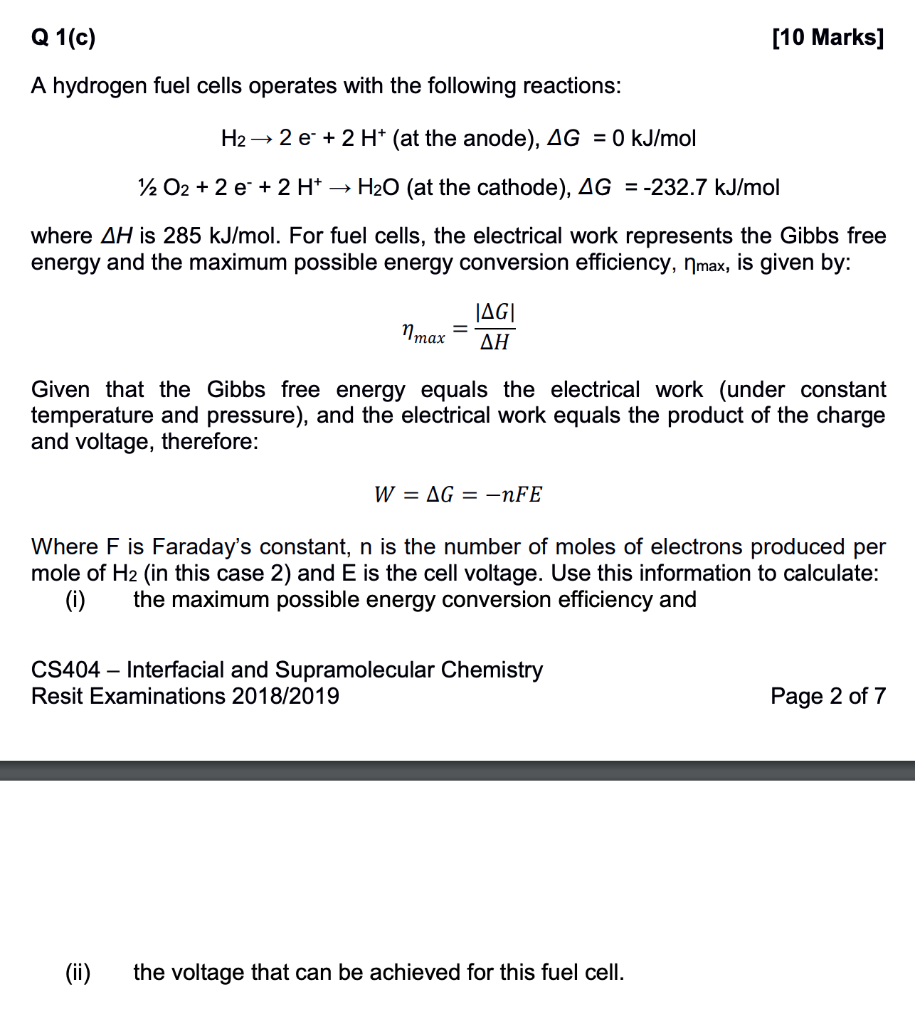Answered step by step
Verified Expert Solution
Question
1 Approved Answer
Q 1(c) [10 Marks] A hydrogen fuel cells operates with the following reactions: H2 2 e + 2 H+ (at the anode), AG = 0

Step by Step Solution
There are 3 Steps involved in it
Step: 1

Get Instant Access to Expert-Tailored Solutions
See step-by-step solutions with expert insights and AI powered tools for academic success
Step: 2

Step: 3

Ace Your Homework with AI
Get the answers you need in no time with our AI-driven, step-by-step assistance
Get Started


